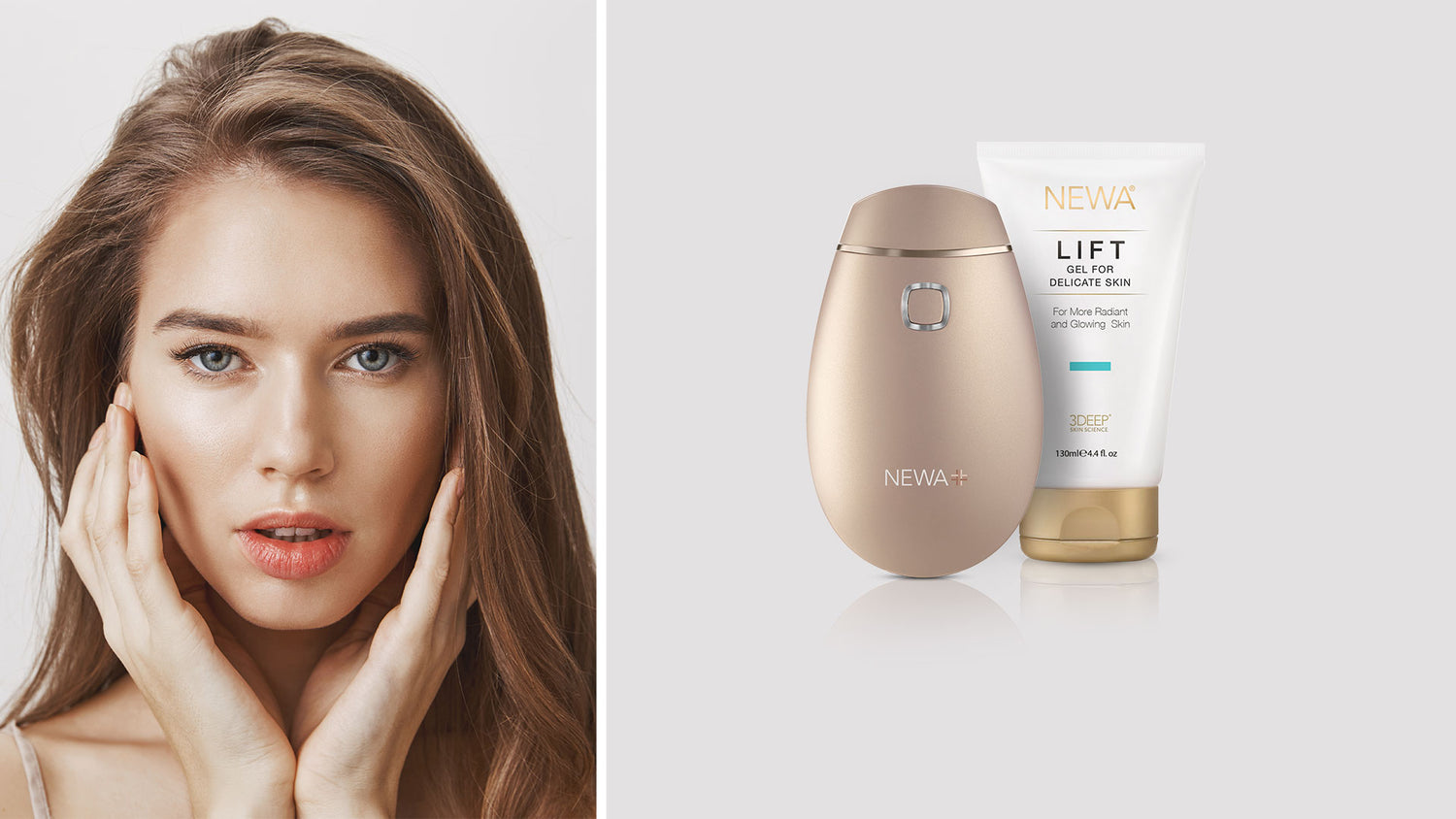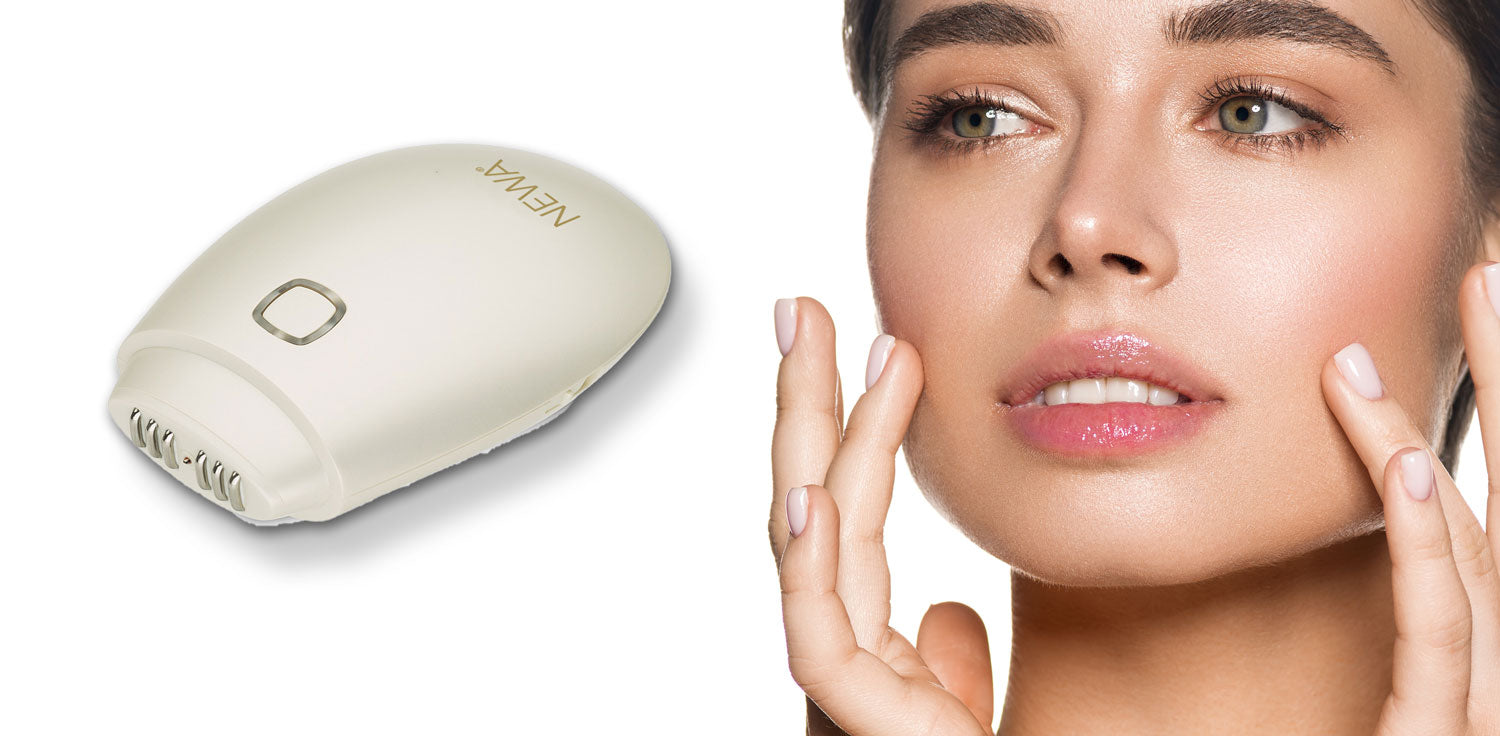Welcome back! We’re taking a look at skin aging here on the blog and the last post covered the deeper skin layer (the dermis) as well as skin elasticity. Part 2 will now look at collagen and improving skin firmness.
If you haven’t already, you’ll want to read our Facial Aging Deep Dive. There, we discuss the types of aging and underlying factors - and just as important, the aging process in the different facial tissues.
Keep reading to finish the second half of our discussion on skin aging - including tightening, firming, and thickening skin.

The Epidermis
 Before we get back into the discussion on age related changes to the deeper skin, it’s helpful to briefly cover the top layer of the skin too.
Before we get back into the discussion on age related changes to the deeper skin, it’s helpful to briefly cover the top layer of the skin too.
The epidermis is the most superficial and what you’re able to see with the naked eye. It’s about the thickness of a piece of paper at .01 centimeters - though some studies have measured it as thin as .007 cm. If the dermis is your support system, the epidermis would be your shield.
While the dermis has only 2 regions, the epidermis has 4 layers in areas with thin skin and 5 layers on our palms and soles where we have thick skin. The deepest epidermal layer - the stratum basale - is where new cells are formed. As basal cells divide, they push the cells above them outward till they reach the skin surface and eventually slough off.
The formation of new cells - AKA cell proliferation or turnover - slows with age. The dead skin cells that make up our skin barrier also become more irregularly shaped. Sun damage can cause hyper-pigmentation and other damage while intrinsic skin aging results in less hyaluronic acid produced in the epidermis.
Luckily, the location of the epidermis makes it easier to reach. Because epidermal aging is mainly environmental, sunscreen and antioxidants can prevent much of it as well. Retinoids like tretinoin can also normalize cell proliferation and even target sun damage.
See our blog post on Building Your Skincare Regimen for more information on how to structure your routine and what products to look for.
Now that we’ve discussed the epidermis though, let’s get back to the deeper and thickest skin layer - the dermis.
The Dermis
 In the prior post, we discussed the role of the dermis and some of its anatomy. Before we get deeper into collagen and how to target it, let’s learn just a little more about the dermis.
In the prior post, we discussed the role of the dermis and some of its anatomy. Before we get deeper into collagen and how to target it, let’s learn just a little more about the dermis.
This part of the skin is a connective tissue layer with loose connective tissue in the papillary dermis and a denser meshwork of thicker collagen and elastin fibers in the reticular dermis. Remember, it’s the reticular dermis that gives the skin its strength and structure while the papillary dermis supports the epidermis.
We also have something called ground substance. This is the extracellular matrix between the dermal fibers - it’s like a gel and contains hyaluronic acid. The ground substance can bind water and influence dermal thickness, acts as an adhesive for dermal fibers and other structures, and has molecules like hyaluronic acid that play an important role in immune activation and wound healing.
Important dermal cells called fibroblasts play an important role in everything we’ve discussed above. They’re responsible for creating everything from collagen and elastin to hyaluronic acid. As we age, they become less active.
Collagen

90% of the tissue in our dermis is collagen. We have different types of collagen in our skin as well, with Type I making up 80-90% of all our collagen. Type II is more common in cartilage not skin while about 15% of our dermal collagen is Type III. Collagen Type III will also be found more in the upper dermis while Type I is in the deeper dermis.
We lose about 1% collagen per year beginning in our early 20s. For women, this number increases as we approach menopause. Other factors, like sun exposure, can also degrade existing collagen and slow production of new collagen. Without intervention, fibroblasts will stop producing enough collagen to maintain existing levels with age.
Because the dermis is so thick compared to the epidermis and is predominantly collagen, this has a significant impact on the skin. Without collagen, skin won’t have the necessary volume in
order to look plump and smooth. And without support, wrinkles can worsen. In addition to a loss in skin firmness, the skin itself will look thinner.
Luckily, turnover is quicker for collagen compared to elastin. Because of this, it’s much easier to stimulate the production of new collagen provided you use something effective and proven.
Skin Firming

We’ve covered the structure and function of the dermis and what happens as we get older. But you’re probably wondering how you can stop or at least slow this process.
Prevention is always an important consideration in any anti aging conversation. It doesn’t matter if you’re doing the best treatments available if you’re exposing your skin to damaging UV rays every day. Skin aging is primarily due to environmental factors like the sun - which means it’s preventable.
We discussed sunscreen and antioxidants in our previous post and that still holds here. Vitamin C is an antioxidant that can protect skin but it’s also an important cofactor in collagen synthesis. Retinoids have been proven to both increase epidermal turnover and increase collagen in the dermis. Niacinamide is another fantastic ingredient to look for as well
If you’re already experiencing collagen loss though, you’ll want to use an effective treatment to stimulate new collagen production in the skin. Microneedling, laser, and radio frequency are all proven therapies you’ll see in-office and a good provider can advise you on the best option for your skin type.
At home though, our NEWA radio frequency device stands apart in both efficacy and research. It’s safe, proven, and easy to use. You can expect firmer skin as well as an almost 4% increase in collagen after 3 months of use. And it will also improve elasticity as discussed in our prior post, targeting multiple concerns at once.
In wrapping up this post, we want to finish by just emphasizing that “anti aging” is a myth. You cannot stop the aging process - nor should you. But you can slow down its effects on the skin and you can improve skin health and appearance at any age. Our goal is always to help achieve your own skin goals.
Enjoyed this post? Share it! And check out some of our other blog posts too.




